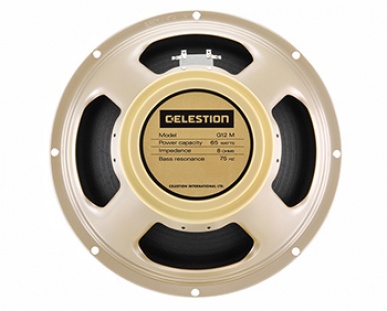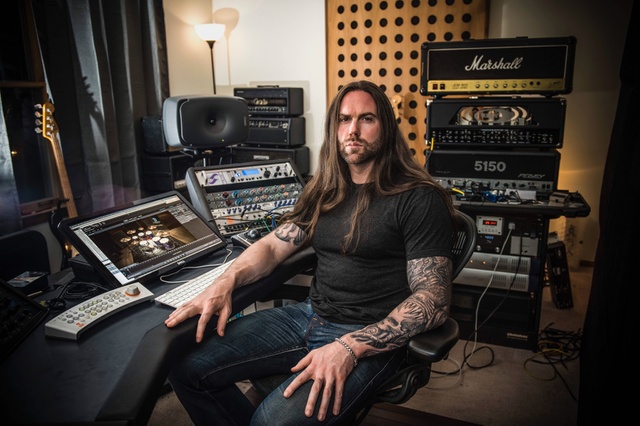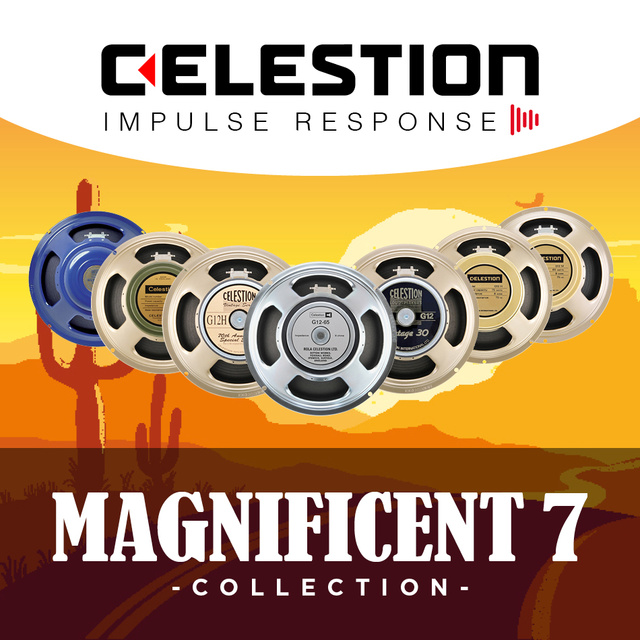
Celestion’s G12M was our very first (and still one of our best-loved) ceramic magnet guitar speakers. Soon after its creation in 1965, the speaker became known as the “Greenback”, thanks to the trademark green can that covered the magnet at the rear of the speaker.
The G12M’s fabled ‘brown sound’ characterised by a warm, controlled low-end, a rich, vocal mid-range and a delicate, detailed top-end, can be heard on countless famous recordings from the 60s through to the present day.
The Race for Power
If the story of the guitar speaker is about anything though, it’s about the quest for tone in the face of the demand for increasing power.
The G12M itself was borne from a need to provide a guitar speaker with a higher power handling capability, when compared with the Alnico speakers that Celestion were producing at the time. At 20-watts the G12M was thought to be a fairly substantial beast–for two or three years at least–until the cry came out for a 30-watt speaker. Celestion responded with the G12H, and the race for power was under way.
And so the cycle continued, with higher power amplifiers requiring higher power speakers to withstand their greater output. This led to the development of a wide range of guitar speakers with increasing power handling capabilities.
The design changes and innovations made to the speakers that enabled them to deliver greater power handling, also resulted in speakers that had substantially different sonic characteristics. They sounded markedly different to their lower powered counterparts, thereby giving guitarists an ever-widening tonal pallet from which to choose.
However great the choice of speakers available though, the fact remained that for anyone seeking the kind of tone delivered by a G12M or similar low powered speaker of that era–what these days we refer to as vintage tone–then what you needed was a low power speaker.
This is because vintage tone has always been synonymous with lower power amps and cabs: it’s the tone produced by a low power speaker, manufactured with parts that aren’t physically able to withstand the higher powered inputs of more modern equipment. After all, that was the equipment that was available to guitarists back then.
Conversely, the higher power speakers, those manufactured with parts made to withstand higher power input, are best associated with a more modern sound, precisely because they are made for use with modern sounding, high power amplifiers.
A New Challenge: More Power, Same Tone
We’ve tried to build a higher power “vintage” speaker before, and with some success. The Vintage 30 was created in 1986 and while not having a truly vintage sound by today’s definition, has ultimately carved itself a place as one of the most unique-sounding and best-loved guitar speakers of all time.
In 2011 we set ourselves a new Vintage challenge: build a speaker that delivers true vintage tone, with sonic characteristics as close to an original G12M as possible, but with a level of power handling capable of keeping up with modern amplifiers and playing styles.
Could we create a speaker using modern parts, designed to withstand greater power, but that genuinely sounds close to an original Greenback?
The answer is yes, and comes in the shape of the G12M-65 Creamback. It has a hefty 65-watt power handling capability and an unmistakably Greenback-like tone.
Does it sound identical to the G12M? No, they’re not 100% alike: that would be practically impossible to achieve! However, they certainly sound like they’re part of the same family, think of the G12M-65 Creamback as the Greenback’s big brother: same vintage vibe, but with the extra heft giving the speaker a bigger bottom end.
No other speaker could sound as close to a G12M and offer this level of power handling capability.
The Legend of the Creamback
The G12M-65 is a brand new innovation from Celestion’s guitar speaker development team in Ipswich, England. However, this isn’t the first time Celestion has produced a Creamback.
There was a period during the early 1970s when occasionally we’d run out of green to make the rear cans for the G12M and G12H speakers. Back then, the significance of the “green back” wasn’t yet fully realised, so we’d use whatever colour came to hand. At various times we produced the Blackback, the Greyback and sometimes… the Creamback.
Whatever the colour of the can, physically and tonally the speakers were actually always Greenbacks.
So we’ve resurrected the cream can for the launch of the G12M-65: to celebrate family ties.









